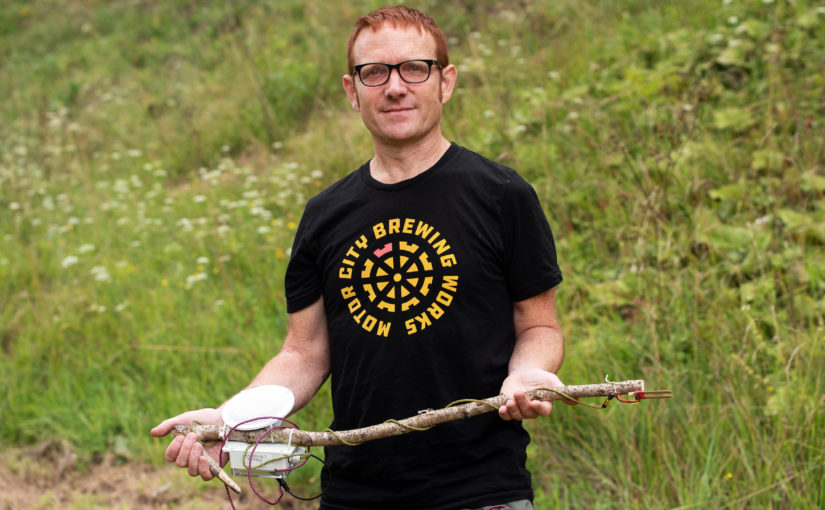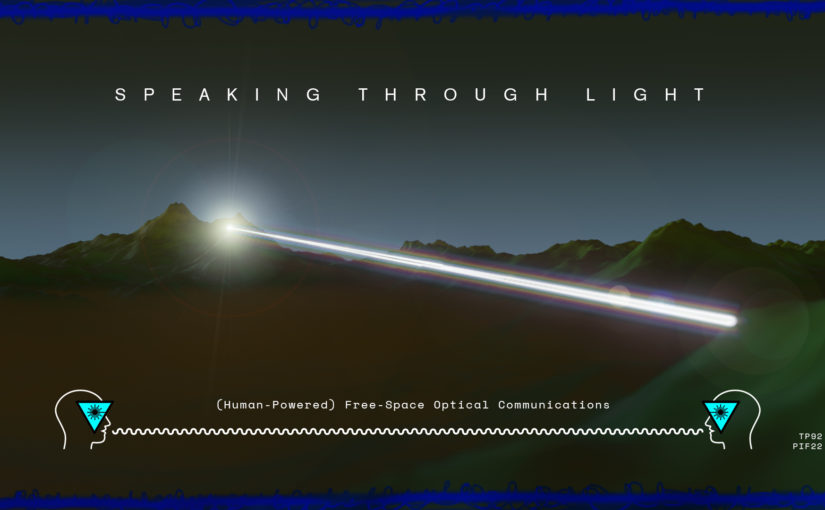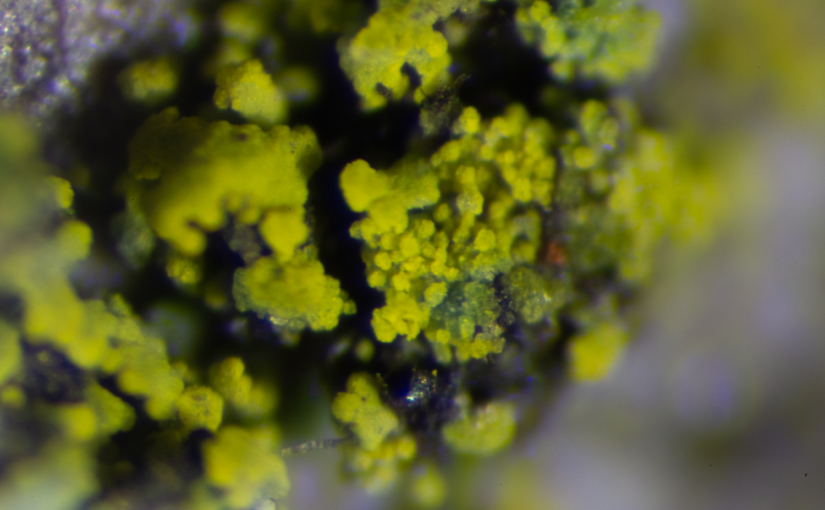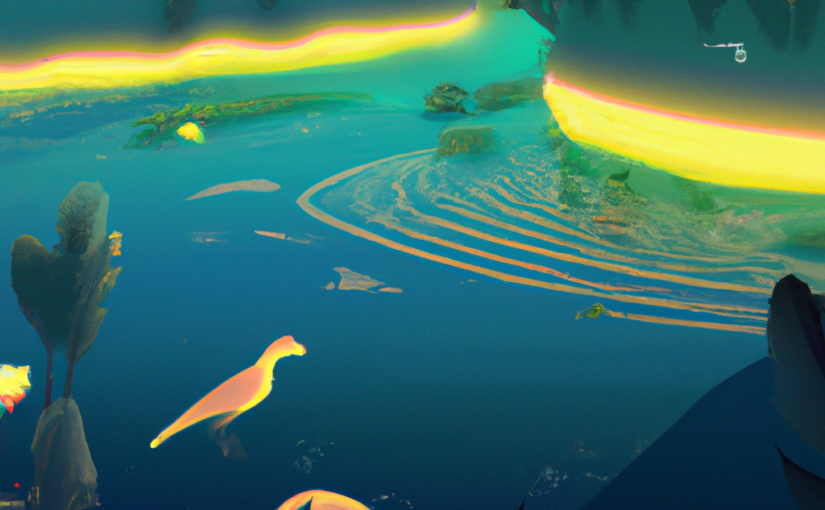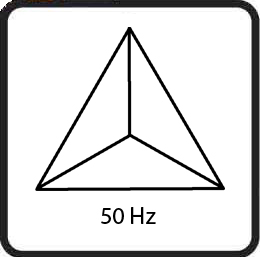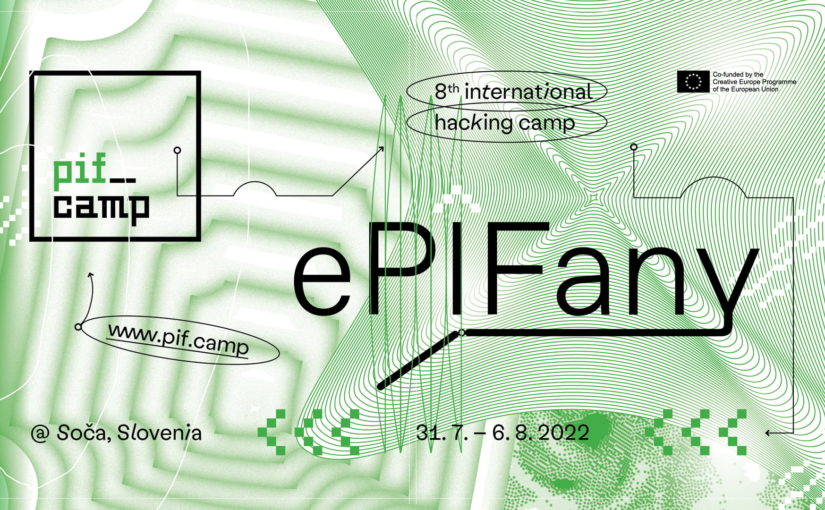Scott Kildall will be developing a new installation called “Machine Alps”, which depicts what trees, plants and fungi might sense from human interference. Using sensors connected to the leaves of plants, barks of trees and surfaces of mycelium, several sculptural nodes will drive low level synthesizers based on live data, using recorded samples of machine noise. This will be a performance where bleeps, churns, grinds and other disruptions get orchestrated into a coherent soundscape.
Category: 2022
Speaking through light
The electromagnetic field is a widely used medium for the transportation of information. Yet its use through free space propagation (meaning not using fiber-optic or electric cables) is mostly limited to the invisible radio spectrum. Those radio waves at comparably low frequencies can travel through walls, beyond mountains, and interplanetary dust clouds, and usually don’t keep us from sleeping. Visible light, on the other hand, can be blocked by a single fly alone and also might annoy us if it flickers through the night.
This week we do not want to be bothered by flashing lights and insects interrupting our communication channels. We want to explore how sound-carrying light looks like, how living nature alters the light, and how this affects the tonal properties of the sound. We would look at light as a specific form of electromagnetic radiation and use software-defined radio technology to modulate and demodulate the streams of photons. We will experiment with loading information onto a visible carrier wave through amplitude, frequency, and phase modulation. Not only sound can be sent via light, but also poems and pictures. Sound to light to music. Words to light to poetry. Light to light to light.
The vast landscape of Triglavski narodni park offers the perfect dimensions for long-range light transmissions. A hike will take us to an elevated place so we can deploy our (hand-crank operated?) laser walkie-talkies. We will get within line of sight and then we will speak through the light.
Speaking through light is a project by Thomas Preindl.
Lichen and Deeper Time
Vivarium & transxxeno lab
Team: Eva Debevc, Nastja Ambrožič, Jakob Grčman, Simon Gmajner, Adriana Knouf
Many entities and processes exist on spatial scales that are not amenable to conventional time-lapse techniques. Lichen, for example, grow extremely slowly, on the order of a few mm to cm per year. This slow growth-rate makes it difficult to understand their dynamics except at punctuated points of observation. Additionally, lichen have extremely fine microstructures and are difficult to cultivate in the laboratory, meaning that in-situ observation is preferable.
At PIFcamp, the team will be prototyping a self-contained system for monitoring lichen over deeper times, both on Earth as well as while traveling in outer space. They will consider various aspects of the problem and develop a prototype for initial testing, considering materials that could be useful for extreme environments. All the outputs will be open-source as a way to develop new possibilities for deeper-time, in-situ and remote observation of organisms and processes that are otherwise diminished in scientific research.
The team will also be giving close attention to this symbiotic organism. Lichens exist throughout the entire biosphere and survive in the most extreme environments but are at the same time sensitive to environmental disturbances. They have also been shown to be resilient to the ravages of space and live for hundreds and sometimes thousands of years. At the venue, we will investigate lichen classification and morphology through investigating those entities that exist in the proximity of the Camp and will prepare a hybrid – remote presentation with Adriana Knouf (Amsterdam, Netherlands), the driving force behind the module and the Founding Facilitator of the tranxxeno lab, a nomadic artistic research laboratory that promotes entanglements amongst entities trans and xeno.
reDigital
The project aims to research, develop and implement techniques that will transcend the real natural world into the digital unnatural realm.
The idea is to use the new techniques and tools to digitize the cultural or natural heritage that is near Pif camp, Soča valley, river canyons, or some artifacts from the WWI Isonzo front. To use photogrammetry to scan the object of desire and bring it to a digital environment and use it in the metaverse.
The team:
Miha Godec graduated in 2014 from the Academy of Arts of the University of Nova Gorica and the Portuguese school ESAD (College of Art and Design). In addition to his photographic and artistic practices, he is also a lecturer for photography and virtual reality, while he independently conducts regular educational, scientific, and artistic workshops. In his artistic practice Godec, who works at the intersection of art, science, and new technologies, focuses on the development of new media projects, in which he researches the consequences of anthropogenic impact on aquatic ecosystems, experimenting with water acquisition, purification and researching the sonification properties of water.
Gabriela Filipović studied physics and mathematics at the Faculty of natural sciences and mathematics in Maribor. Besides other diverse side-jobs, she worked as a freelance translator and tutor, as a sound technician, music arranger and DJ. Her work experiences include areas like project management in a company for manufacturing hydraulic lifting solutions and manual testing of mobile applications. In collaboration with KID KIBLA / KIBLA2LAB she is currently active in the field of cultural heritage preservation, specifically LIDAR scanning of objects.
Žiga Pavlovič (Ljubljana, 1987) is a programmer, maker, and promoter of new technologies. He studied in Maribor, Graz and the city of Tampere in Finland and still takes most of his knowledge away from online workshops. Most of his work is in the field of virtual, augmented and mixed reality, and since 2019 also in the field of interactive installations, in collaboration with the artist Valerie Wolf Gang. He already collaborated with KID Kibla in 2016 on the preparation of an AR-enriched book, and since 2020 he has been working with them again as a creative technologist and teacher in the media laboratory Kibla2LAB in the network of research centres of arts and culture – RUK and the digital heritage incubator in the E-DURI project.
50 hZ
We all depend on it to a point where we don’t even notice it even exists.
Become a part of the cult, that worships three phased power transmission and join the droning hum of 50 cycles per second. Secrets on how not to kill yourself with mains voltage will be revealed. The 5 commandments of safety will protect you from the black magic that calls itself induction and lurks behind every power socket.
Text and photo by Bernhard Rasinger.
Only 10 days left until PIFcamp!
PIFcamp open call is closed!
You can apply until the 7th of May!
